|
|
|
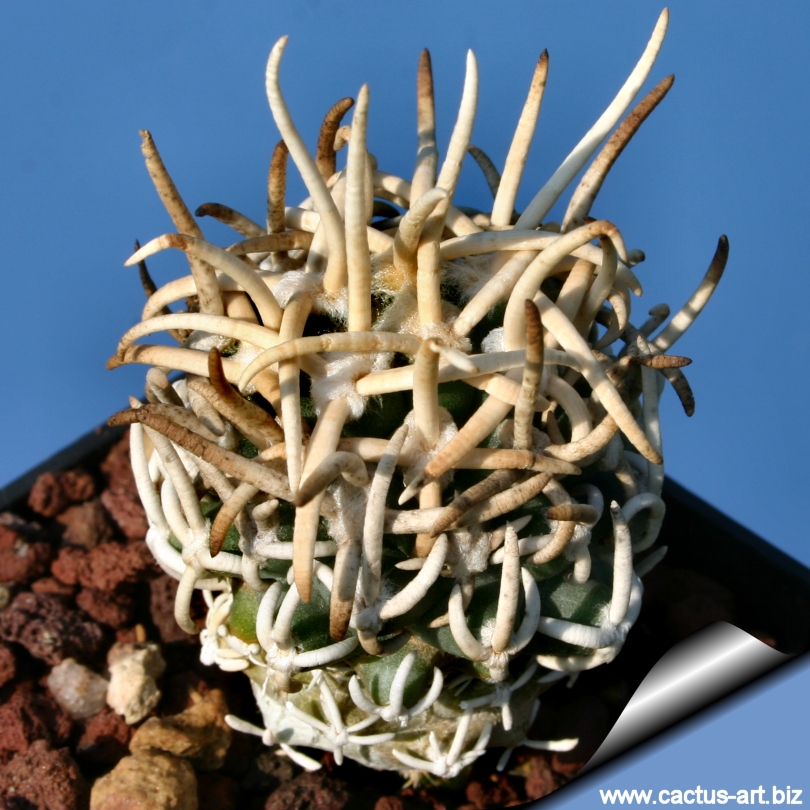
Pediocactus peeblesianus
forma menzelii
RP 116 South-West of Grand Canyon, Hualapai Hiltop Area,
Coconino County, Arizona, USA
|
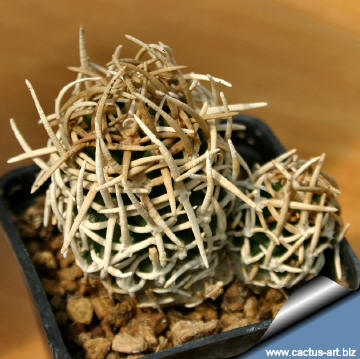 |
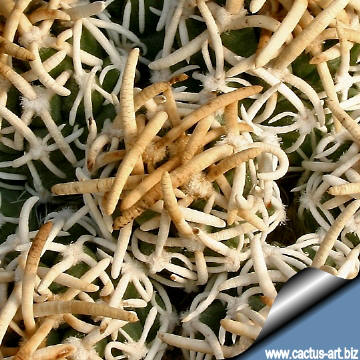 |
|
. |
|
 |
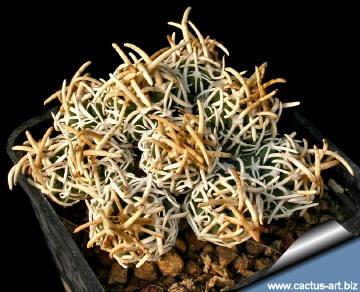
Pediocactus peeblesianus
forma menzelii
RP117 South-West of Grand Canyon, Coconino
County, USA. |
|
. |
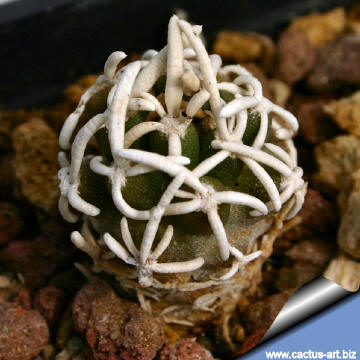
Pediocactus peeblesianus forma menzelii RP 116
|
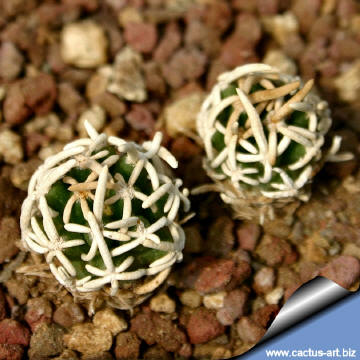
4 years old seedlings
|
|
. |
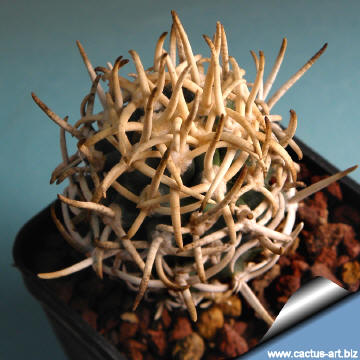 |
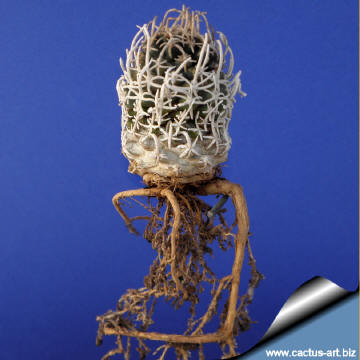 |
|
.
|
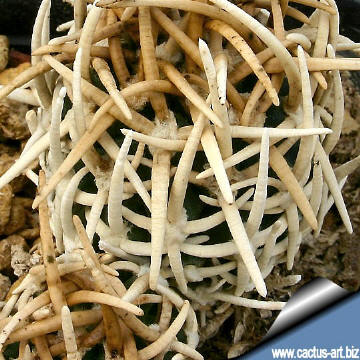 |
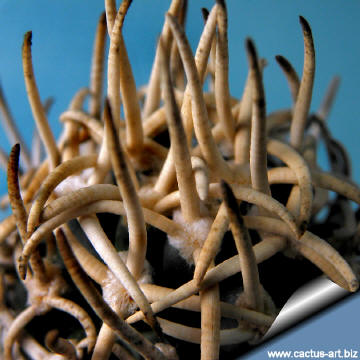 |
|
Advertising
|
|
|
|
|
|
|
Family:
Cactaceae (Cactus
Family)
Scientific name:
Pediocactus peeblesianus Croizat
fa. menzelii (Hochstätter) M. Hajek. comb. nov. 2000
Basionym: Navajoa peeblesiana
f. menzelii Hochstätter
Published in: Cactaceae-Review 2 (2): 10-11. 1999.
Origin: USA (northern Arizona), 1500-1650 m elevation.
Habitat: Grows in well drained gravelly
soils of alkaline desert scrub and desert grasslands; 1200-1650 m; The
plant retracts in the soil during dry weather. Although the area this
cactus is coming from is very dry, it has a rainy season in winter and
one in late summer, as is typical in Arizona.
Conservation status: Listed in
CITES appendix I
Common Name: Cataract Creek Cactus, Menzel´s Cactus
Synonyms:
-
Navajoa peeblesiana Croizat var. menzelii
(Hochstätter) Hochstätter
- Pediocactus peeblesianus (Croizat)
L.D. Benson
Published in: Cact. Succ. J. (Los Angeles). 34: 58.
1962.
- Navajoa peeblesiana Croizat
Published in: Cact. Succ. J. (Los Angeles) 15: 89,
fig. 42. 1943.
- Utahia peeblesianas (Croizat)
Kladiwa
- Echinocactus peeblesianus
- Toumeya peeblesiana
|
|
Description: Pediocactus
peeblesianus var. menzelii is a small, generally solitary (or with a
very few branches) cactus.
Stem: Stems grey-green, obovoid, or
depressed-globose up to 2,5(6) cm tall and averaging 1.5(5) cm in
diameter.
Areoles: Areoles circular, woolly.
Spines: Usually radial and central (rarely all radial) soft corky
or spongy, harder at tips, white to pale grey and sometimes 0-1
intermediate spines per areole
Radial spines: Usually 4 (o more) that form a twisted cross, 3-7
long.
Intermediate spines: Curved upward, 8-21 long,
Central spines: Usually 1 per areole, there are no central spines
in young specimens, a stouter spongy and flexible central spine will
appears in older plants this spine is straight to strongly curved 5-18 ×
1 mm.
Flowers: Yellow to yellow green up to 2.5 cm in diameter, often
larger than and hiding the smaller plant body below. Scales and outer
tepals minutely toothed or denticulate or entire and undulate; outer
tepals with brown-purple midstripes, oblanceolate 1-1.4 × 1.5-2.5 cm;,
5-13 × 2-4.5 mm; inner tepals cream, yellow, or yellowish green,
lanceolate, 6-12(-15) mm. They are not self-fertile.
Flowering season: Spring.
Fruit: Dry, , turbinate, 6-11 × 5-8 mm turning tan at maturity,
dehiscing by both a dorsal slit and by a ring around the circumscissile
apex.
Seeds: Dark brown to black, 3 × 2 mm, papillate and rugose.
|
|
|
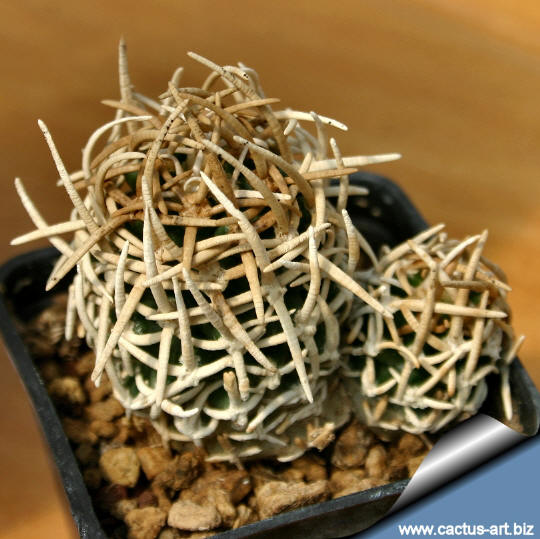
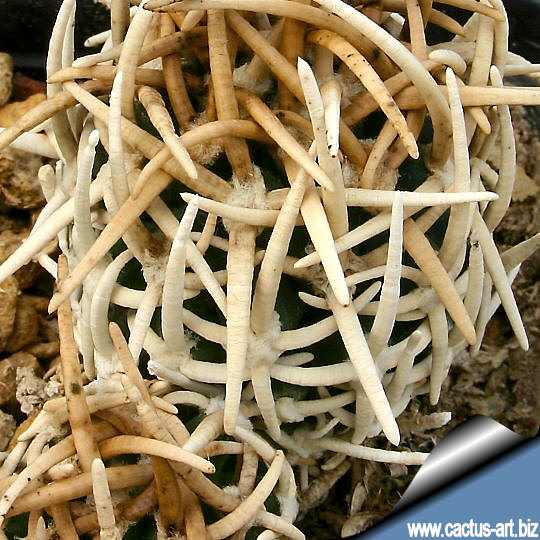
Cultivation:
Rot prone and difficult to grow on it's own roots in
cultivation need a soil soil with little organic or no
material. This species is better and easier if
grafted. It needs regular water in late
winter, early spring (the short main
growing season), and also in
Autumn.
Propagation: Seeds, grafting.
Temperature for optimum
germination: night minimum approx 17 day maximum to near 40
C at any time of year with proper temperatures and
daylength (ca.13-14 hours); it is possible to extend
day-length with
artificial lights. Anyway the seeds
germinate slowly with difficulty and a low rate of
success (But germiation is
comparatively easy if compared with other Pediocactus
and Sclerocactus species and often new seedling
cluster spontaneously around the plant every year),
scarification and
stratification help, alternate
freeze
and
thaw both wet and dry, but don’t keep wet, alternate wet and
dry with changing temperature.
Germination can take several
years so keep pot and try again next year. Seedlings do not do
well either, and some die each year, for this reason
plants are commonly
grafted on hardy stocks like
Opuntia compressa in this case
they are easy to grow and no special skill is required.
Photo of conspecific
taxa,
varieties, forms and cultivars of Pediocactus
peeblesianus:

 |
|